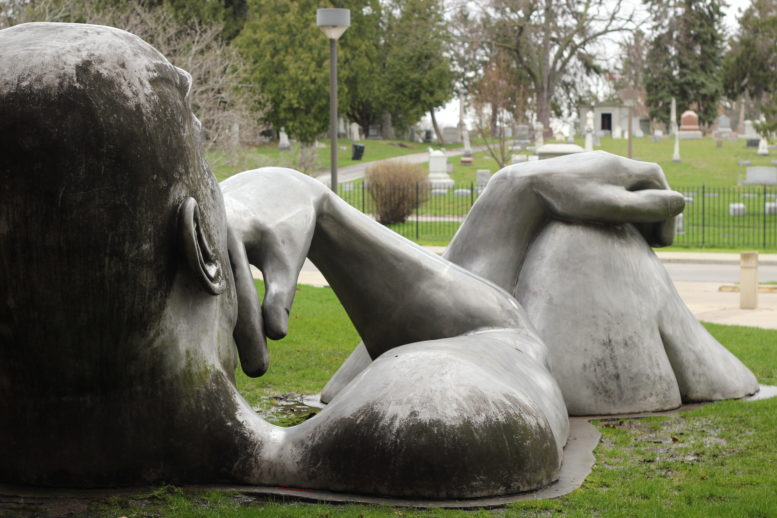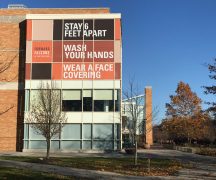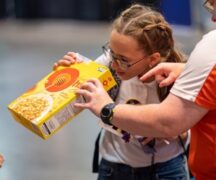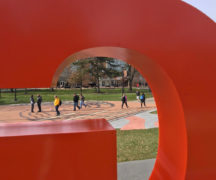By DAVID DUPONT
BG Independent News
As Bowling Green State University opens a new semester trying to push the pandemic aside, preliminary findings from a study of teaching and learning in 2020 shed some light on the impact of the coronavirus.
Last year, Chad Duffy, an assistant professor of rhetoric and writing studies, and Amílcar Challü, who teaches history, received a grant from the National Endowment for the Humanities to launch an initiative at BGSU to address teaching during the pandemic.
They had three goals for the money.
The first was to offer a “summer camp” for about 20 faculty members who had their contracts ended as the university dealt with the anticipated financial fallout of the pandemic. The workshop focused on improving remoting learning – both in synchronous classes where students attend remotely at a specific time and asynchronously where the courses are posted and students can login at any time.
The grant money also went to pay those faculty members to teach during the fall semester.
Challü said they were able to retain 25 faculty members in fall. There were 720 students in the sections they taught. Those classes would not have be offered were it not for the grant. All were in the humanities, including English, foreign languages, history, theater, and art.
The grant provided a reprieve for those faculty, not permanent positions.
Now a year later Duffy and Challü sat down to talk about the final goal, a survey of how members of the university community – students, staff, administrators, and faculty – felt about teaching and learning during the pandemic.
The survey was conducted in the spring, 2020, summer 2020, and fall 2020.
In addition to asking recipients to rate their experiences, they also asked for narratives of people’s experiences. In all they received more than 200 – 110 recounted negative experiences while another 98 recounted positive.
While the numbers from the survey are still being crunched, they came away with some “quick snapshots.”
Undergraduate students, Duffy said, were the only constituency to express strong feelings against remote learning. “There is a perception among undergraduates that face-to-face learning is a better form of learning. That would be our hypothesis.”
That coincides with what the administration has insisted as it has pushed forward to return to face-to-face classes this semester despite concerns among faculty as the Delta variant causes a surge.
Challü said the administration did not use the survey, but based their decision on their own data that they have not shared.
Duffy said they cannot say why undergraduates had this kind of reaction. Maybe it was a social narrative. Last summer, he recalled, one of the issues discussed as the summer camp was coming together was the perception of online learning as being a lesser form of learning.
And the undergraduates’ reaction could just be a manifestation of that widely held belief.
But the faculty participating asserted that remote learning was not something that would go away. That it was a permanent part of the educational landscape.
Challü said that remote elements are now part of all classes.
Duffy added that there are calls from within the disability community to maintain online options for classes and virtual meetings.
Still, Challü said, “we gained a new appreciation for face to face.”
Graduate students reported that during the pandemic their intellectual and personal growth suffered.
Again, Duffy said, they don’t know at this point why that is.
Challü noted that there seems to be an increase in the number of graduate students deciding to discontinue their studies. This is reflected in those students for whom he has supplied letters of recommendation or advised.
What became clear is the importance of collaboration, Duffy said. Based on the self-assessments of health, there are strong indications that collaboration increases feelings of personal and intellectual growth.
No other factor showed that kind of impact, Duffy said. He’s not aware of any research that looks at the tie between collaboration and mental and intellectual growth. This could be a promising line for future research.
Challü said that he saw some of this with the online graduate courses that he teaches that are aimed at teachers. Before the pandemic, they took these courses asynchronously. But during the pandemic a number of them switched to the synchronous mode. Either way, he said, they are typically excellent students who are involved and turn in “high quality work.” But they seemed more connected with him and the class when participating synchronously.
“Students,” he said, “learn much more together than they do like their own.”





